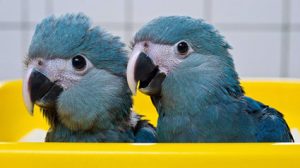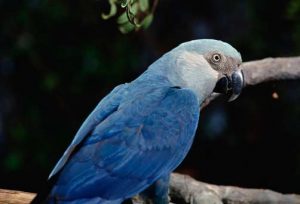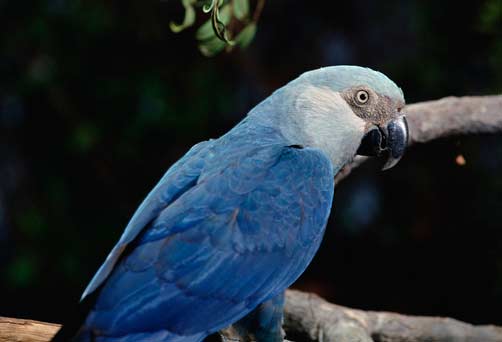 One of the more disheartening and unfortunate occurrences in the wild is the disappearance of the Spix’s macaw. The Spix’s macaw (Cyanopsitta spixii) is a medium-sized macaw with shades of blue and a vibrantly colored upper region of feathers. The Spix’s was so named after German naturalist, Johann Baptist von Spix back in 1819 and was found within the range of its native Brazilian landscape. The parrot was discovered and cataloged back in 1638, also by the German naturalist Georg Margrave.
One of the more disheartening and unfortunate occurrences in the wild is the disappearance of the Spix’s macaw. The Spix’s macaw (Cyanopsitta spixii) is a medium-sized macaw with shades of blue and a vibrantly colored upper region of feathers. The Spix’s was so named after German naturalist, Johann Baptist von Spix back in 1819 and was found within the range of its native Brazilian landscape. The parrot was discovered and cataloged back in 1638, also by the German naturalist Georg Margrave.
Popularized in Film

The bird had been popularized in two 20th Century Fox animated movies, Rio, and Rio 2, giving rise in the public consciousness of the beautiful exotic parrot. In 2019, the Spix’s macaw was designated extinct in the wild by the International Union for Conservation of Nature (IUCN), when the last bird known in existence in the wild disappeared in 2016.
The primary culprits faulted for their extinction are illegal trafficking of the birds, the large-scale reduction of the slow-growing Caraiba tree, and the building of a large dam in the Spix’s natural habitat. Altogether, this collection of events contributed heavily to the Brazilian bird’s rapid decline from existence. In 1969, the Brazilian government declared it highly illegal to trap and sell the Spix’s macaw nor could anyone own one as a pet.
A Hopeful Reintroduction
 The Brazilian government has overseen the preservation of approximately 180 Spix’s macaw parrots with the express purpose of reintroducing them back into the Brazilian landscape. They have hopes that the birds can find new ways to flourish in the wild. The long-term plan was to nurture some of the captive birds and train them to eventually reintegrate into a natural setting. On June 11, a group of scientists, veterinarians, and other professionals released eight adult Spix’s macaws back into the wild in their once native location. Another 12 adults will follow them in December of 2022 to further enhance the chances of their survival in the wild. The full plan by the consortium has earmarked a span of 20 years for the reintroduction project. Their goal is for the plan to take hold and allow for the natural proliferation of the rare bird.
The Brazilian government has overseen the preservation of approximately 180 Spix’s macaw parrots with the express purpose of reintroducing them back into the Brazilian landscape. They have hopes that the birds can find new ways to flourish in the wild. The long-term plan was to nurture some of the captive birds and train them to eventually reintegrate into a natural setting. On June 11, a group of scientists, veterinarians, and other professionals released eight adult Spix’s macaws back into the wild in their once native location. Another 12 adults will follow them in December of 2022 to further enhance the chances of their survival in the wild. The full plan by the consortium has earmarked a span of 20 years for the reintroduction project. Their goal is for the plan to take hold and allow for the natural proliferation of the rare bird.
Johann Baptist von Spix, back in 1819 referred to the parrot as “very rare” even then. It’s considered very rare because the species lived exclusively within a small location range that encompassed around 125 miles of space. That small region gave the parrot specific requirements that did not spill over into a broader range.
The parties involved in this new effort include the German agency, the Association for the Conservation of Threatened Parrots (ACTP), and the multi-intent Pairi Daiza Foundation, which specializes in the reintroduction of animal and plant species back into their original environment. Along with the Brazilian government, great strides were made, and we now have a full-fledged project in action, one that we sincerely hope will take root and produce the expected results, and beyond.
May the newly released macaw adults (and those to follow over the 20-year plan) find the old homestead to their liking. Watch the exciting release of the eight adults in this thrilling ABC News-released YouTube video.
